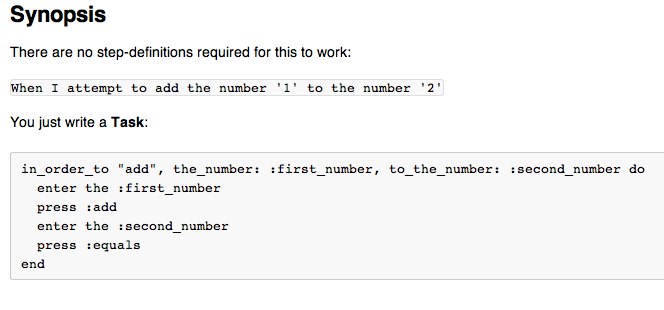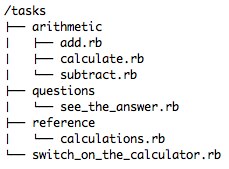Acceptance Criteria, Scenarios, Acceptance Tests are, in my experience, often a source of confusion.
Such confusion results in questions like the one asked of Rachel Davies recently, i.e. “When to write story tests” (sometimes also known as “Acceptance Tests” or in BDD parlance “Scenarios”).
In her answer, Rachel highlighted that:
“…acceptance criteria and example scenarios are a bit like the chicken and the egg – it’s not always clear which comes first so iterate!”
In that article, Rachel distinguishes between acceptance criteria and example scenarios by reference to Liz Keogh’s blog post on the subject of “Acceptance Criteria vs. Scenarios”:
“where she explains that acceptance criteria are general rules covering system behaviour from which executable examples (Scenarios) can be derived“
Seeing the acceptance criteria as rules and the scenarios as something else, is one way of looking at it. There’s another way too…
Instead of Acceptance Criteria that are rules and Acceptance Tests that are scenarios… I often find it useful to arrive at Acceptance Criteria that are scenarios, of which the Acceptance Tests are just a more detailed expression.
I.e. Scenario-Oriented Acceptance Criteria.
Expressing the Intent of the Story
Many teams I encounter, especially newer ones, place higher importance on the things we label “acceptance criteria” than on the things we label “acceptance tests” or “scenarios”.
By this I mean that, such a team might ultimately determine whether the intent of the story was fulfilled by evaluating the product against these rules-oriented criteria. Worse still, I’ve observed some teams also have:
- Overheads of checking that these rule-based criteria are fulfilled as well as the scenario-oriented acceptance tests
- Teams working in silos where BAs take sole responsibility of criteria and testers take sole responsibility for scenarios
- A desire to have traceability from the acceptance tests back to the acceptance criteria
- Rules expressed as rules in two places – the criteria and the code
- Criteria treated as the specification, rather than using specification by example
If we take the approach of not distinguishing between acceptance criteria and acceptance tests (i.e. see the acceptance tests as the acceptance criteria) then we can encourage teams away from these kinds of problems.
I’m not saying it solves the problem – it’s just easier, in my experience, to move the team towards collaboratively arriving at a shared understanding of the intent of the story this way.
To do this, we need to iteratively evolve our acceptance criteria from rules-oriented to scenario-oriented criteria.
Acceptance Criteria: from rules-oriented to scenario-oriented:
Let’s say we had this user story:
As a snapshot photographer
I want some photo albums to be private
So that I have a backup of my personal photos online
And let’s say the product owner first expresses the Acceptance Criteria as rules:
- Must have a way to set the privacy of photo albums
- Private albums must be visible to me
- Private albums must not be visible to others
We might discuss those to identify scenarios (as vertical slices through the above criteria):
- Create new private album
- Make public album private
- Make private album public
Here, many teams would retain both acceptance criteria and scenarios. That’s ok but I’d only do that if we collectively understood that the information from these two will come together in the acceptance tests… And that whatever we agree in those acceptance tests supersede the previously discussed criteria.
This understanding tends to occur in highly collaborative teams. In newer teams, where disciplines (Business Analysts, Testers, Developers) are working more independently this tends to be harder to achieve.
In those situations (and often even in highly collaborative teams) I’d continue the discussion to iterate over the rules-oriented criteria to arrive at scenario-oriented criteria, carrying over any information captured in the rules, discarding the original rules-based criteria as we go. This might leave me with the following scenarios:
- Create new private album (visible to me, not to others)
- Make public album private (visible to me, not to others)
- Make private album public (visible to me, & others)
Which, with a subtle change to the wording, become the acceptance criteria. I.e. the story is complete when we:
- Can create new private album (visible to me, not to others)
- Can make public album private (visible to me, not to others)
- Can make private album public (visible to me, & others)
Once the story is ‘in-play’ (e.g. during a time-box/iteration/sprint) I’d elaborate these one at a time, implementing just enough to get each one passing as I go. By doing this we might arrive at:
Scenario: Can Create new private album When I create a new private album called "Weekend in Brighton" Then I should be able to see the album And others should not be able to see it Scenario: Can Make public album private Given there is a public album called "Friday Night" When I make that album private Then I should be able to see the album And others should not be able to see it Scenario: Can Make private album public Given there is a private album called "Friday Night" When I make that album public Then I should be able to see the album And others should be able to see it
By being an elaboration of the scenario-oriented acceptance criteria there’s no implied need to also check the implementation against the original ‘rules-oriented’ criteria.
Agreeing that this is how we’ll work, it encourages more collaborative working – at least between the Business Analysts and Testers.
These new scenario-based criteria become the only means of determining whether the intent of the story has been fulfilled, avoiding much of the confusion that can occur when we have rules-oriented acceptance criteria as well as separate acceptance test scenarios.
In short, more often than not, I find these things much easier when the criteria and the scenarios are essentially one and the same.
Why not give it a try?



